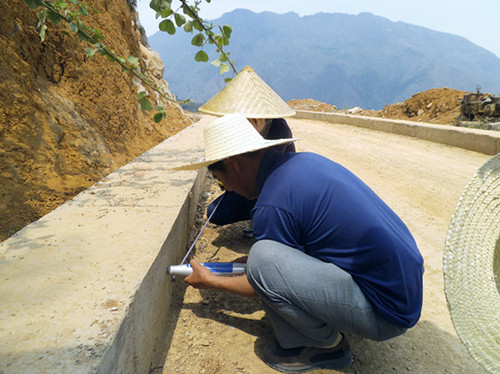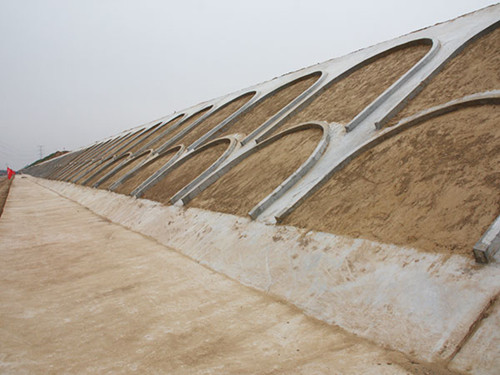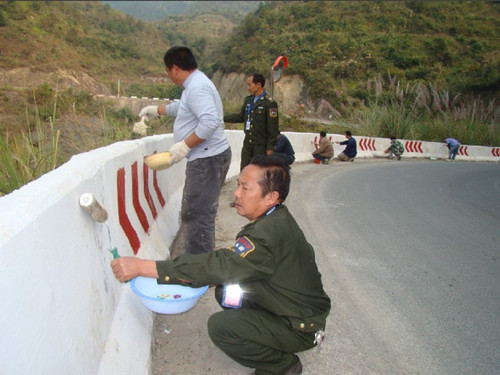Friends who drive regularly must not only be familiar with traffic regulations, but also be familiar with the various signs and various displays on the road. Speaking of the shoulder wall, many friends are very familiar with it and will be seen in the surroundings of our lives. On the road, or on some tree-lined paths, especially those who often run long distances, they often see at high speed, especially In the mountainous area, the shoulder wall is very nice, many friends are familiar with the shoulder wall, but few friends know the construction technology of the shoulder wall . Do not worry, I'll share with you today the shoulder wall construction technology processes. Let everyone know how the shoulder wall is constructed.

The role of the shoulder wall
1 to protect the stability of major structures such as traffic lanes;
(2) For the occurrence of mechanical failure or emergency situations, the vehicle needs temporary parking to provide location;
3 Provide lateral width, which is conducive to safety and increase comfort;
4 Available for pedestrians and bicycles;
5 Provide locations for setting up on-street facilities;
6 as a workplace for conservation operations;
7 It can also be used as a location to lay underground facilities without damaging the highway structure;
8 Improve the line-of-sight of bends on excavation roads to improve traffic safety;
9 Enables rainwater to be discharged at a location away from the carriageway, reducing storm water penetration and reducing road damage.

Shoulder wall classification
Right shoulder
For a four-lane highway with a design speed of 120km/h, a hard shoulder of 3.50m on the right should be used. For six-lane and eight-lane highways, a hard shoulder of 3.0m on the right should be used. When subject to terrain conditions and other special circumstances, the minimum value can be used.
Left shoulder
For an eight-lane and above highway as an integral cross-section, it is neither safe nor realistic to let a failed or exhausted vehicle cross several lanes and park to the right shoulder. As a rule of thumb, hard shoulders at least not less than 2.5m thick should be provided on the left side for anchored vehicles to park or wait for towing.
When the highway and the first-grade highway adopt separate sections, the hard shoulder on the left side shall be provided. Should also be in the width of the left and right side of the hard shoulder, respectively, in the lane by the edge of the edge of the road, its width is generally 0.75m or 0.50m.
Shoulder wall design principles
Highways and Class I highways shall adopt hard shoulders on the left side of the carriageway, and plain hillocks of highways and first-class highways when using the intermediate zone with a separated section or width > 4.5m. The road shoulder width should be used when conditions permit. ≥ 2.50m hard shoulder. The urban roads are generally provided with drains for the wells, with sidewalks on both sides. When taking drainage from the side trenches, shoulders should be set on the outside of the pavement. Like highways, hard shoulders and protective shoulders are divided. The calculation speed of urban roads is greater than or equal to 40 km/. h, should set hard shoulders. The protective road shoulders are generally earthy or simple paving, and their role is to provide venues for certain traffic facilities of urban roads, such as guardrails, pole bars, traffic signs, etc. The minimum width is 0.5m. For a section with a gutter in the middle of a double or quad road, the shoulder on the left should be provided.
Road shoulder wall construction process
Measurement and lofting, review of the original design drawings, according to the newly measured ground line to determine whether the design elevation can meet the actual needs, and then combined with the original design and construction drawings, reported to the supervision engineer for approval.
1. Construction lofting and excavation, from the approach retest and encrypted wire points, release the control piles of the retaining wall and encrypt them, hit a small nail on the top of the pile, and then use cement mortar to fix the pile so that the linear shape can be controlled at any time in the construction process. At the same time, the level of re-testing and encryption will guide the elevation to each stake in order to detect the depth of excavation. After the inspection engineer supervised the test, the excavation line of the foundation pit was sprinkled with lime. The excavation work of the retaining wall was carried out manually with an excavator. The excavator was used to excavate along the open pit to the base design elevation of 20 to 30 cm above, and then Manually clean the remainder to the base design elevation and level it.

2. Before the foundation wall construction, if there is a soft foundation treatment, it must be excavated to the back of the bedrock to be built to ensure the stability of the retaining wall. The size requirement of the block stone is: 30cm×30cm×100cm. Before masonry, the scale of the stone surface should be cleaned and kept moist with water. Before the masonry, the poles must be erected on both sides. The outside line should be straight and neat, and the inside line should be roughly conformed to ensure that the geometrical dimensions of the masonry parts meet the design requirements. Therefore, in the process of masonry construction, the poles should always be effective. The mortar masonry should be paved with slurry, and the vertical joints should be filled with slurry. There must be no gaps and vertical joints. When the masonry is interrupted, the pores of the stone layer can be filled with mortar, and the surface must be carefully cleaned and wetted. Settlement joints are set to 10~15m in accordance with the requirements of the specification, and the width of the joints is 2cm. The settlement joints are filled with asphalt batts along the inside, outside and top three sides.
3. Before the construction of the wall, according to the height of the wall, the height of each layer of stone should be basically flush, and the hanging line can be masonry. Each layer of facing stone should be in accordance with the provisions of the provisions of the mortar width and the wrong requirements, and then use Pulp laying, sequential masonry and standing seams.
Masonry process requirements: must be layered erection, a small one straight, each stone should be installed in the upper and lower two stone along the middle, every other layer of stone masonry should be up and down the seam, the transverse seam should be On a straight line. The inlaid facetstone must be artificially cut in vitro. The stone size must be 30cm x 30cm x 100cm. The positive and negative errors are less than 5mm. The exposed surface reaches an inch of three-diamond chiseling standard. The masonry seam width is 1.3-1.5cm. Filling stones should also be interlocked with layered masonry blocks of the above specifications, with a slot width no greater than 2.0 cm.
4. If the block stone is loose or cracked, the block stone should be lifted again. The cushion mortar and masonry should be cleaned at the mortar, and then the stones should be repaved on the new mortar. When the wall is masonry more than 3 meters, a wooden scaffold should be set up for manual and safe operation. Stitching process requirements: the ink hook line must be run straight, the original masonry mortar must be removed 2cm deep before jointing, to ensure that the joint mortar and stone firmly bonded. In addition to the joint width, the rest of the stone surface must not have mortar to prevent the mortar from contaminating the stone surface. The jointing mortar should be one mark higher than masonry mortar, and can not be less than 10th. Any masonry mortar must be mechanically mixed and artificial mixing is strictly forbidden. It is required that each masonry construction site must be equipped with a number of mortar mixing machines. According to the design requirements, a 6PVC pipe is set as a drain hole every 2~3m, and a gravel filter layer is installed outside the hole to infiltrate the geotextile.
5. When the strength of masonry reaches over 70% of the design strength, it can be backfilled according to the requirements of the specification. When backfilling, it is backfilled with layers. The thickness of each layer is 15cm. The real compaction degree after compaction should reach 95. %.
Editor's summary: The construction process of the road shoulder wall is still rather complicated. During the construction process, it will strictly control the progress. If the progress is fast, a series of problems will arise. These problems may lead to landslides and other unpredictable. In recent years, the road shoulder wall has been particularly popular. Basically, some beautification sections need to have some road shoulder walls. They look good, and they are also more practical, such as the city's underground roads, expressways and the like.
Wall Construction Exterior Real Stone Paint Construction Living Room Glass Partition Wall Balcony Wall Decoration Attic Bedroom Partition Wall Modeling Shoulder Wall Construction Process
Cutting Coolant,Cutting Oil Price,Cutting Oil For Drilling,Water Based Cutting Fluid
FRANCOOL TECHNOLOGY (SHENZHEN)CO., LTD , https://www.francoolcn.com
![<?echo $_SERVER['SERVER_NAME'];?>](/template/twentyseventeen/skin/images/header.jpg)